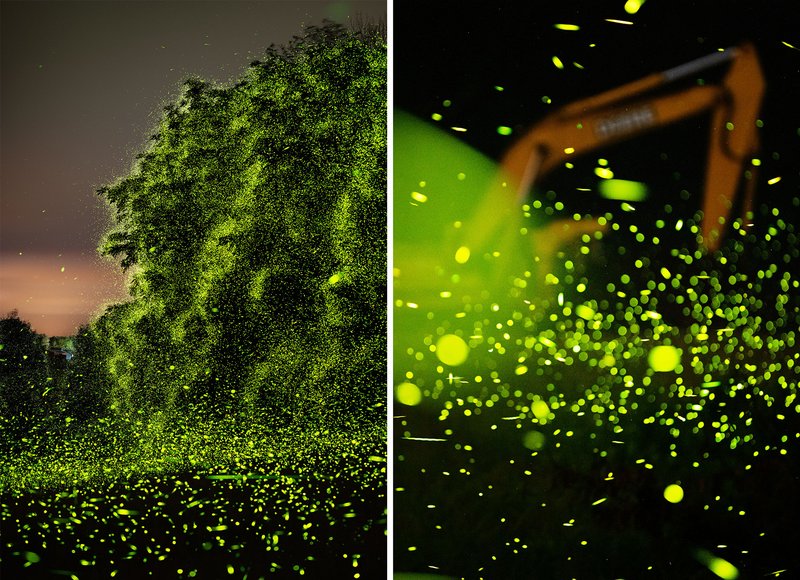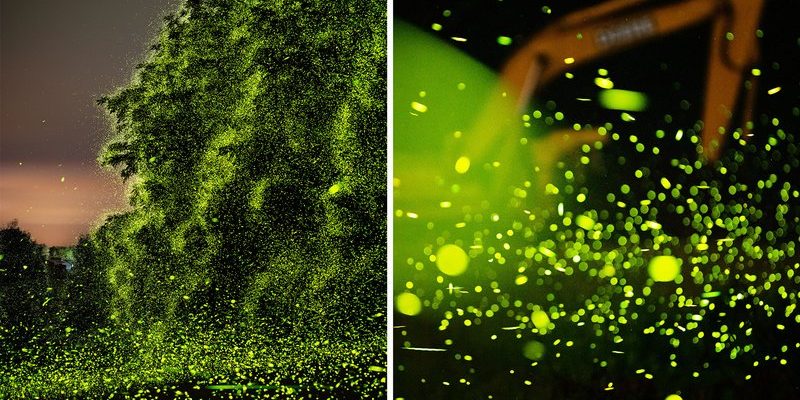
These little lanterns of nature aren’t just magical; they’re also masters of adaptation. From their breeding habits to the environments they thrive in, fireflies have figured out how to make the most of their habitats. Let’s explore the different places they call home, how their lives seem to dance to the rhythms of nature, and why their adaptability is crucial for their survival.
Firefly Habitats: Where Do They Call Home?
Fireflies can be found in various environments around the world, but they truly thrive in moist, warm areas. You’ll often spot them in fields, gardens, wetlands, and even forests. They prefer places with abundant vegetation since these areas provide shelter, food, and safety from predators.
Many species are also tied to specific habitats. For instance, Lampyridae is a family of fireflies that particularly enjoys wooded areas. Here, they can find sheltered spots and ample food sources. Others might be seen in open fields or grassy meadows, where their bioluminescence can easily attract mates.
Interestingly, fireflies are also sensitive to changes in their environment. Urbanization, pollution, and habitat destruction can affect their populations. If you’ve ever wondered why you don’t see as many fireflies these days, it’s probably due to the loss of their natural habitats—like the beautiful, sprawling fields that used to host them.
The Life Cycle of Fireflies
Understanding where fireflies live also means diving into their life cycle. Fireflies go through several stages: egg, larva, pupa, and adult. Each phase has its own habitat requirements.
In the egg stage, fireflies typically lay their eggs in moist soil or leaf litter, where they are protected from the elements. After a few weeks, the larvae hatch and emerge as tiny, worm-like creatures. This is when they start to look for food, which usually consists of snails and other soft-bodied insects. They often stay hidden in damp places during this stage to avoid predators.
The larval stage can last for up to two years, which is quite the commitment! When they’re ready, firefly larvae will pupate in a safe spot, transforming into adults. When they finally emerge, it’s their time to shine—literally! The adult stage is where you’ll witness their glowing dances at twilight, primarily for mating purposes.
How Fireflies Use Bioluminescence
One of the most captivating aspects of fireflies is their ability to produce light. This glowing phenomenon, called bioluminescence, is primarily used for attracting mates. Isn’t it amazing how these tiny insects have this built-in light show?
Fireflies have special organs in their abdomen that create this light through a chemical reaction. The process involves a substance called luciferin, oxygen, and an enzyme called luciferase. When these elements mix, they produce light without generating heat, which is why it’s often called “cold light.”
Each species of firefly has a unique flashing pattern, which helps them find a mate. You might have noticed that some fireflies flash in quick bursts while others have a slower, more rhythmic glow. Understanding these patterns can help them match with the right partner. Imagine trying to find someone at a crowded party—those flashing lights are like unique signals, making it easier for fireflies to connect.
Adapting to Their Environment
Fireflies are also champions of adaptation. Their ability to thrive in various habitats makes them particularly resilient. For example, some fireflies have developed different light patterns based on their environments. This not only aids in mate attraction but can also be a defense mechanism against predators.
In areas with heavy pollution, fireflies are known to have altered their reproductive behaviors. They might be less inclined to light up in brightly lit surroundings, adapting to make sure they can still attract mates without becoming easy targets.
Additionally, as climate change alters their habitats, some fireflies have begun to shift their geographical ranges. They can often be found moving North as temperatures rise, seeking new areas that provide the warmth and moisture they thrive on. This adaptability is crucial for their survival, especially as their traditional habitats face threats from environmental changes.
The Importance of Fireflies to Ecosystems
Fireflies don’t just light up our nights; they play an important role in our ecosystems. As larvae, they help control pest populations by feeding on soft-bodied insects. This natural pest control is vital for keeping gardens and fields healthy.
Moreover, fireflies also serve as indicators of environmental health. Their presence often signifies a clean, healthy habitat. If you’re lucky enough to see fireflies, it usually means the area is thriving, which is good news for all the other creatures that call it home.
However, when firefly populations decline, it might indicate larger environmental issues. This declines can be due to habitat loss, pesticide use, and light pollution, all of which can disrupt their mating behaviors. Protecting fireflies means protecting our ecosystems.
Conservation Efforts for Fireflies
Given the challenges they face, there are some exciting conservation efforts underway to protect firefly populations. Simple changes in our gardening habits can make a big difference. For instance, using fewer pesticides and leaving areas of your yard to grow wild can provide ideal habitats for fireflies.
Additionally, many communities are working to raise awareness about these enchanting insects. Festivals celebrating fireflies are popping up, allowing people to connect with nature and learn about the importance of preserving these unique creatures.
By understanding and promoting habitat conservation, we can help ensure that future generations enjoy the magic of watching fireflies dance through the night sky.
The Bottom Line: Appreciating Fireflies
Fireflies might be small, but they hold a big place in our hearts and ecosystems. From their intricate life cycles to their mesmerizing light shows, there’s so much to admire about these little creatures. By understanding where they live and how they adapt, we can better appreciate their role in our environments.
So, next time you catch a glimpse of those flickering lights on a warm summer evening, remember the incredible journey these fireflies take. They remind us of nature’s beauty and the importance of preserving it. Let’s work together to keep the magic alive!

